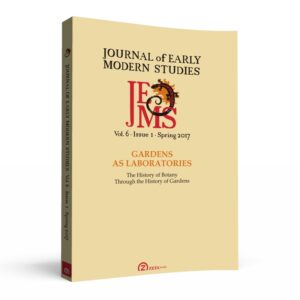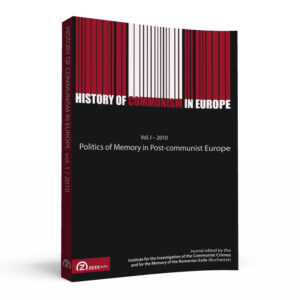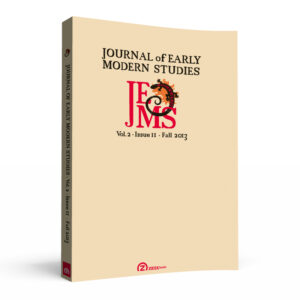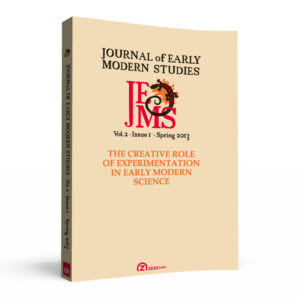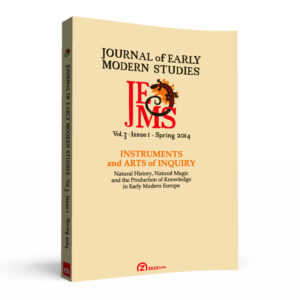ARTICLES
Fabrizio Baldassarri (Bar-Ilan University, Tel Aviv), Introduction: Gardens as laboratories. A history of botanical sciences
Florike Egmond (Leiden University), Experimenting with living nature: documented practices of 16th-century naturalists and naturalia collectors
- Abstract: This article discusses experimentation in the context of sixteenth-century natural history, or natural science as I prefer to call it here. It uses predominantly textual sources, many of them manuscript letters, from different European countries, mainly Italy, the Low Countries, France and Germany-Austria. The focus is on the practice of experimentation and its documentation, partly because I proceed from the assumption that the investigation of living nature did not necessarily entail the same type of experimentation as contemporary alchemy, pharmacy, or medicine, although all these domains of knowledge and their practitioners overlapped. The subject matter to some extent imposed its own rules. The first part of this essay analyses experimentation in the garden, which often combined practical purposes with research ones. The second and third parts discuss experimentation with both plants and animals that originated in more general questions or led to more wide-ranging conclusions about natural phenomena. The final section discusses the links with natural philosophy in these different types of experimentation in natural science, and addresses the possible implications for the concept of experimentation itself in the period shortly before the ”new science” of the seventeenth century.
María M. Carrión (Emory University), Planted Knowledge. Art, Science, and Preservation in the 16th-Century Herbarium from the Hurtado de Mendoza Collection in El Escorial
- Abstract: The interactive correspondence of art, science, and preservation supports the composition of a four-volume anonymous herbarium originally belonging first to the Venetian library of Ambassador Hurtado de Mendoza, and later endowed to the Royal Library of the Monastery-Palace of El Escorial. This planted knowledge consisted of artistic and scientific practices (composition, writing, calligraphy, naming, drying, pressing, cataloguing, relating to health properties, and so on) to preserve not only the plants dried and glued to recycled paper, but the association of those plants, with names, stories, and contexts in ways that attest to the development of natural history and philosophy in sixteenth-century Italy and Spain. This article describes and analyzes the composition of the Hurtado herbarium, its provenance, and its place in the context of early modern European naturalism and botany. Finally, it considers problems of reading this collection, and possible solutions to better understand the herbarium in El Escorial as another piece of this network of dissemination of ethnobotanical knowledge in early modern Europe.
Ana Duarte Rodrigues (Universidade de Lisboa), The role of Portuguese Gardens in the development of horticultural and botanical expertise on oranges
- Abstract: In the early modern period, botany still remained a relatively new arrival at the top table of knowledge. Much botanical work was not done in universities, colleges, academies, laboratories, or botanic gardens (usually associated with universities), but behind the walls of different kinds of gardens – of the royalty as well as of common people, of monasteries as well as public gardens. By following the circulation of oranges, especially taking into consideration the role of Portugal as a turntable, this paper sheds light on several of the unexpected ways in which the history of botany and horticulture and the history of gardens encountered in the early modern world. The history of oranges has often made reference to the acclimatization of this citrus fruit in Europe and its transplantation to the New World. However, very few works have addressed the dissemination of oranges from the Iberian Peninsula. In this paper, I argue for a change in perspective by stressing the role played by the Portuguese on acclimatization and dissemination of oranges from Asia to Portugal, and from this country to the Old and New Worlds. I also stress the role Portugal played in building and popularizing horticultural expertise for orange growth and its corresponding botanical knowledge.
Oana Matei (Vasile Goldiș Western University of Arad), Reconstructing Sylva sylvarum. Ralph Austen’s Observations and the use of experiment
- Abstract: Bacon’s projects of natural history were extremely popular in the mid-seventeenth century, especially for a group of people devoted to experimental activities, namely the Hartlib Circle. Ralph Austen, one member of the Hartlib Circle, tried to construct his own project of natural history using Bacon’s Sylva sylvarum as a pattern and following the Baconian scheme with particular interest for the methodological aspects entailed by such an endeavor. This paper provides an account of Austen’s attempts at writing a natural history as found in his Observations upon some part of Sr Francis Bacon’s Naturall History. It discusses the methodology and aims served by such an enterprise, both practical and theoretical: the role of experimentation in the process of compiling a natural history as the most reliable activity able to provide accurate knowledge of the natural world and the determination to provide general rules and axioms about nature.
Alette Fleischer (Independent scholar), Leaves on the loose: The changing nature of archiving plants and botanical knowledge
- Abstract: This paper focuses on the relationship between the compilation of a herbarium in early modern history and the search for a classification of nature. By looking at the histories of different herbaria and their compilers, this paper shows how the nature of ordering botanical materials changes along with the search for a system of ordering plant knowledge.
Sarah Cawthorne (University of York), Experimenting with “Garden Discourse”: Cultivating Knowledge in Thomas Browne’s Garden of Cyrus
- Abstract: Books were materially and metaphorically botanical in the early modern period. This article uses The Garden of Cyrus (1658), Thomas Browne’s wide-ranging philosophical tract, to illustrate how the often self-conscious links between books and gardens could operate in epistemologically significant ways. It argues that Browne’s repeated positioning of his book as a garden creates a productive model for aesthetic, theological and scientific experimentation and innovation. The framework of the garden constructs a space in which the foremost, apparently contradictory, models of knowledge associated with the seventeenth-century garden—the analogical approach of the doctrine of signatures and the empirical approach associated with the “new science”—can coexist. Extrapolating from the book of nature to suggest the inherently discursive and rhetorical forms of Browne’s knowledge as well as its limitations, the article concludes by proposing a new spatial model for this kind of coterminous literary and experimental approach: the elaboratory.
Gabriel R. Ricci (Elizabethtown College), Science, Art and the Classical World in the Botanizing Travels of William Bartram
- Abstract: William Bartram would accompany his botanizing father, John, into the wilderness and he would famously memorialize his own explorations with an account that mixed romantic conventions with natural history and Quaker theology. William’s interior life corresponds to the spirit of Virgil’s Eclogues with its promise of the restoration of a Golden Age, replete with bucolic scenes of shepherds tending their flocks and singing nature’s praises. This paper addresses some of the political interpretations that Bartram’s work has received and argues that William was focused on a distant past which he was introduced to through the classical curriculum at the newly founded Academy of Philadelphia (1752). William’s curriculum guaranteed an introduction to the conventions of the sublime and the picturesque, since Addison’s Spectator was also required reading and he was well-versed in Linnaean nomenclature, but wherever William botanized his observations of the natural world were framed by classical literature. His tour of ancient Indian ruins where he imagined an Areopagus and a space free of strife and bloodshed is a dramatic example of William’s habit of importing a place defined by classical literature into his natural history.
Alexandru Mexi (Vasile Goldiş Western University of Arad), Early Modern Garden Design Concepts and 20th Century Royal Gardens in Romania. Peleş Castle and the Mannerist Landscape
- Abstract: Built in between the end of the nineteenth century and the beginning of the twentieth century in a mountainous region in Romania, the Peleş Castle and its gardens were conceived according to the mid sixteenth and early seventeenth centuries landscape design principles. Thus, the surrounding landscape, the park and gardens at the royal residence in Sinaia make up an overall image of a Mannerist landscape in which the Villa or, in this case, the castle, is integrated in a complex allegorical, alchemical and political programme. To explore this chronologically incongruent design and to explore gardening principles perhaps invisible in plain sight for modern eyes, the following study aims to emphasize the presence of early modern Western European gardens in the design of the park and gardens at Peleş. This analysis will also reveal the various ways in which, by manipulating nature according to Late Renaissance and Mannerism principles, nature was staged to achieve political goals.
BOOK REVIEWS
Endre Szécsényi (ed.), Francis Hutcheson and the Origins of the Aesthetic, special issue of the Journal of Scottish Thought, Vol. 7, Research Institute of Irish and Scottish Studies, University of Aberdeen, 2016 (Eduard Ghiţă)
Florike Egmond, Eye for Detail. Images of Plants and Animals in Art and Science, 1500-1630, London: Reaktion Books, 2017 (Speranța Sofia Milancovici)
Tamás Demeter, David Hume and the Culture of Scottish Newtonianism: Methodology and Ideology in Enlightenment Inquiry, Boston: Brill, 2016 (Matias Slavov)
ISSN: 2285-6382 (paperback)
ISSN: 2286–0290 (electronic)
The publication of this issue was supported by a grant of the Romanian National Authority for Scientific Research and Innovation, CNCS – UEFISCDI, PN-II-RU-TE-2014-4-0694, Collaborative Research, Technological Advancement, and Experimental Philosophy in the Seventeenth Century: The Hartlib Circle and the Rise of “The New Science”.


